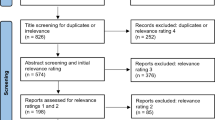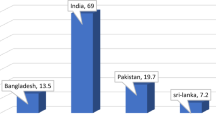Abstract
The article discusses the employment effects at the sub-national level of large-scale mining projects. It argues that the effect of employees’ expenditure is at least as important as production linkages to employment and at least potentially as important to diversification and economic development. It reviews some of the practical difficulties in estimating employment effects of this kind and uses three practical examples, from Chile, the Democratic Republic of Congo and Zambia, to illustrate both the challenge of estimating employment effects from employee spending and the magnitude of the effects themselves. Finally, the reasons for the relative neglect of the issue are discussed, as well as the implications for policy formulation.
Similar content being viewed by others
Notes
There exists no universally recognized definition of the terms, but definitions differ only very slightly between users.
For instance, the average monthly salary in the mines studied in Zambia (see “Northwest province, Zambia” section) was US$800, while at the same time, the minimum wage was US$128. Workers in the informal sector earned even less (data from companies).
TFM does not keep a file of employees’ addresses since there is no functioning postal system and wages are paid by automatic bank transfer to bank accounts. However, it is a tradition in Katanga that companies provide maize to employees’ families since this provides food security for the family. Over the years, shortages of maize, which is the staple food in Katanga, have been common. Accordingly, the addresses where maize sacks are delivered are known and provide a measure of the number of employees in each location.
The assumed wage is relatively high for Zambia, but given the level of qualifications necessary, it was assumed that the majority of the employees concerned were formally employed and earned more than the minimum wage.
References
Alternative Sud (2012) Observatoire du développement Urbain, Etude sur l’impact de l’exploitation de la mine de Kwatebala sur les emplois indirects dans la concession Tenke Fungurume Mining (Draft)
Aragón FM, Rud JP (2011) Natural resources and local communities: evidence from a Peruvian gold mine
Aroca P (1999) Evaluación del Impacto Económico del Proyecto Fase IV de Minera Escondida Limitada sobre la II Región y el País. Mimeo, IDEAR, Universidad Católica del Norte, Antofagasta, Chile
Aroca P (2001) Impacts and development in local economies based on the mining sector: the case of the Chilean II Region. Resour Policy 27(2):119–134
ICMM (2006) Synthesis of four country case studies, the challenge of mineral wealth: using resource endowments to foster sustainable development
ICMM (2007) Chile, The challenge of mineral wealth: using resource endowments to foster sustainable development
Kasanga J (2012) Leveraging Zambia’s industrialization with growth of copper mining investments: strategy for expanding local manufacturing capacities to supply the Zambian mining industry. Zambian Mining Local Content Initiative (ZMLCI) Discussion paper
Koppert G, Kasongo AK, Manyong SK, Kalamu PN, Mukumba MKW, Mujinga VM (2010) Socioeconomic monitoring report 2009, Prepared for the Tenke-Fwaulu ESIA Part II (with reference to the 2006 baseline survey), Democratic Republic of Congo, Groupe d’Etude des Populations Forestières Equatoriales, Paris-Fungurume
McMahon G, Remy F (2001) Large mines and the community. Socioeconomic and environmental effects in Latin America, Canada, and Spain, World Bank, IDRC
McMahon G, Tracy B (2012) Firm and sector level mining benefits in Zambia. Draft paper, SEGOM, World Bank, May 29, 2012
Schodde RC, Hronsky JMA (2006) The role of world class mines in wealth creation. Soc Econ Geol Spec Publ 12:71–90
United Nations Economic Commission for Africa (2011) Minerals and Africa’s Development, The International Study Group Report on Africa’s Mineral Regimes
Author information
Authors and Affiliations
Corresponding author
Rights and permissions
About this article
Cite this article
Östensson, O. The employment effect of mine employees’ local expenditure. Miner Econ 27, 135–142 (2014). https://doi.org/10.1007/s13563-014-0056-6
Published:
Issue Date:
DOI: https://doi.org/10.1007/s13563-014-0056-6




